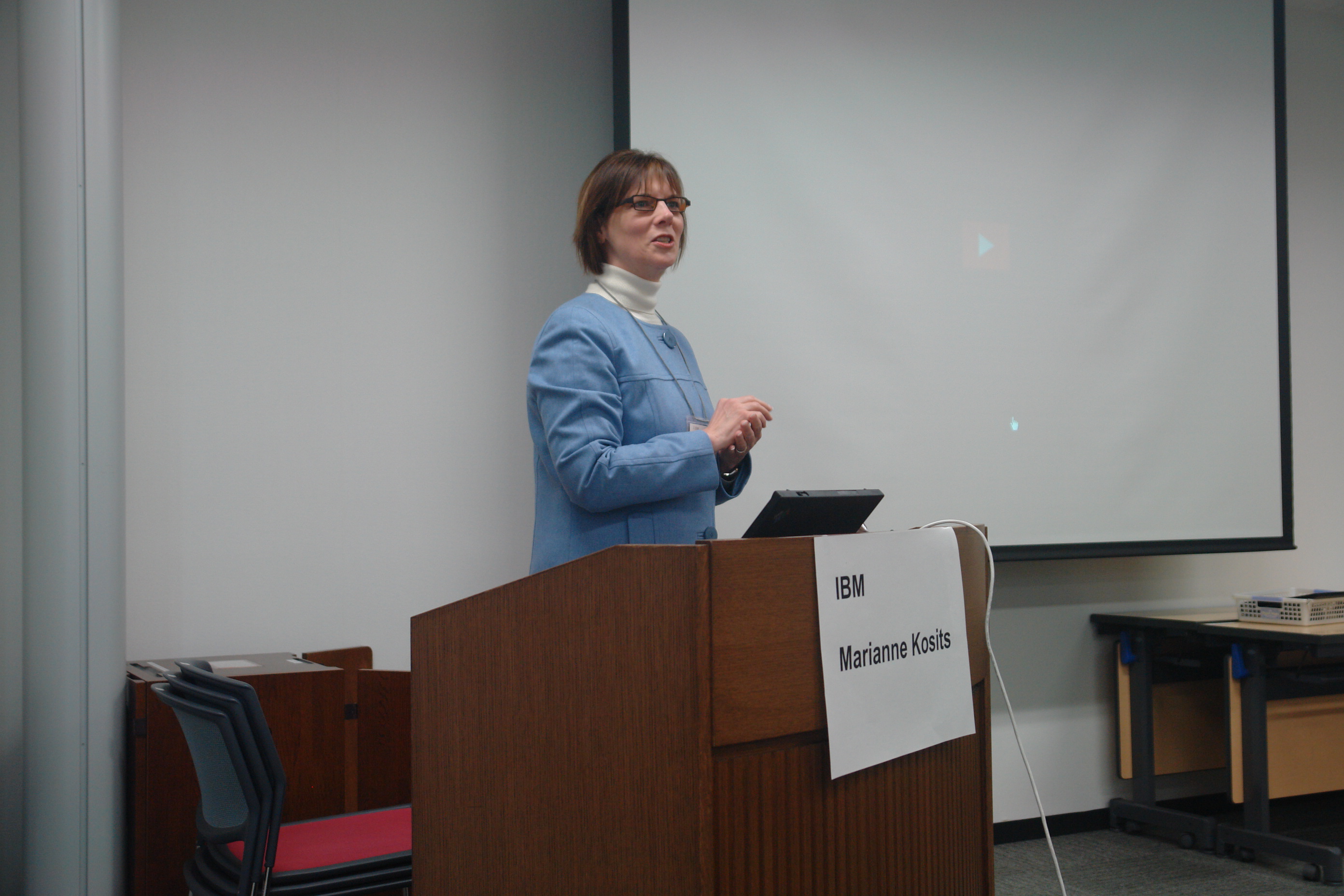Open Seminar on Service Systems Science (2009), Systems Sciences Meet Service Sciences, Service Innovation Educational Program, Tokyo Institute of Technology (Tamachi campus)
This digest was created in real-time during the meeting, based on the speaker's presentation(s) and comments from the audience. The content should not be viewed as an official transcript of the meeting, but only as an interpretation by a single individual. Lapses, grammatical errors, and typing mistakes may not have been corrected. Questions about content should be directed to the originator. The digest has been made available for purposes of scholarship, posted on the Coevolving Innovation web site by David Ing.
Introduction by Kyoichi Jim Kijima
- Presentation scheduled by Steve Haeckel, couldn't attend due to family
Marianne Kosits
- Co-author of article in Systems Research and Behavioral Science

[Marianne Kosits]
Have worked with Steve Haeckel over 15 years
Card trick on color change
All businesses are service systems
- All businesses are service providers
- Requires changes in strategy, structure and governance
- New sensors have to be identified and placed into a market that yet may have to be identified, to see the signals to be responded to
A history of service in IBM
- 1960s: IBM means services
- IBM couldn't be effective unless had effect on customer, impacted the way that IBMers thought and behaved
- 1968: Unbundled
- Hard to take service apart from the product, what is profitability by account
- 1969-1991: Struggle to make service a business
- 1991-?:
- Struggle to reconcile service / product business models
- Capitalization of services
Proposed systems management as a service, executives found a good idea, but didn't know how to charge for it
Start from the customer, and work back into the organization
A game changer:
- What would it mean to be an organization that responds most effectively to what is actually happening ...
- .. as opposed to being most efficient in executing plans for what was predicted to happen?
- Working from the needs of the customer; then how to compose capabilities and resources of the company
Make and sell thinking versus Sense and respond thinking
Chinese manufacturer repair person consistently found potatoes in the hoses: washing not just clothes, but also vegetables
- Now baskets for vegetables and for clothes
Unnatural acts in a make and sell organization
Unnatural acts in a sense and respond organization
Traditional dichotomy: pick your purpose
- Beyond budgeting roundtable
- Peter Drucker business exists to supply goods and services to cusotmers
- Robert Kaplan: business has only one constituent, its shareholder
- Not just changing strategy and structure, but organizational thinking
A service-centered alternative, business purpose as a beneficial effect, rather than an output
Ackoff: produce an effect, not product or service
Capability networks:
- They provide connections, but neither interoperability nor coherent behaviour at scale
Strategy as structure
Game with customers
Value hierarchy pyramid:
- Deliverables are outputs
- Client operational benefits are effects
- Client strategic benefits are effects
- Each of the three above levels have different levels of accountabilities
Role and accountability designs: value-producing architecture
Orchestra versus jazz
Way forward scenario

This work is licensed under a Creative Commons Attribution-NonCommercial-ShareAlike 4.0 International License